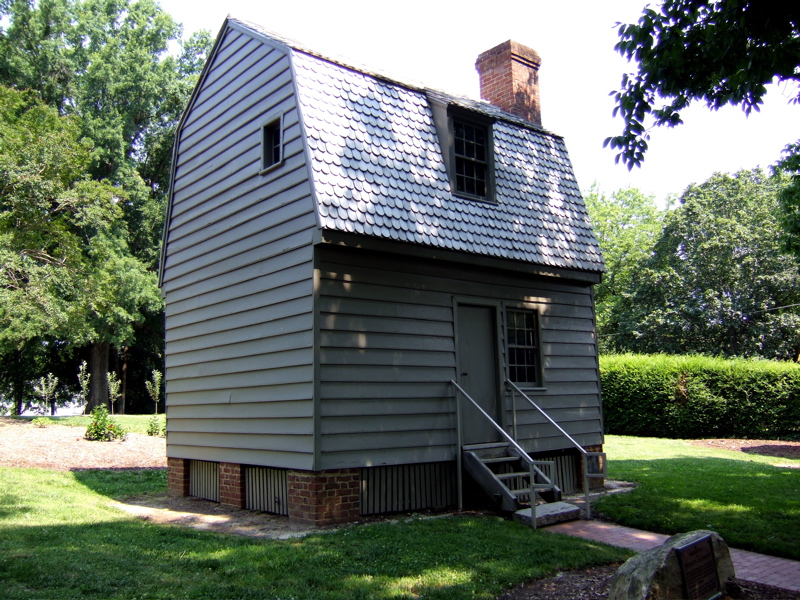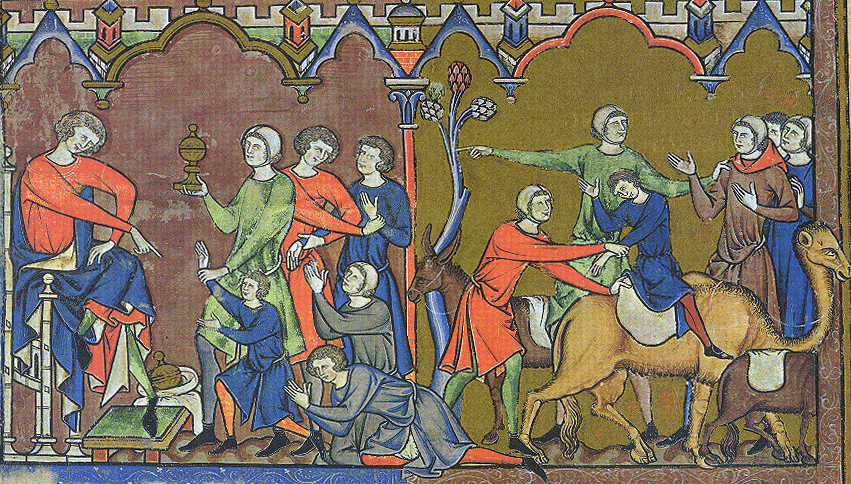|
Sarah Ewing Sims Carter Gaut
Sarah Ann Ewing Sims Carter Gaut (July 12, 1826 – August 21, 1912), usually known as Sarah Ewing Carter, was an American socialite, secessionist, and Confederate spy. She is purported to have hung the first Confederate flag in Franklin, Tennessee and became famous during the American Civil War for assisting her cousin, Adelicia Acklen, in smuggling cotton out of the country to sell in Europe. She entertained both Confederate and Union Army officers and soldiers in her home, gathering information to provide to Confederate troops. Gaut was the founder of the Franklin and South Pittsburg chapters of the United Daughters of the Confederacy. Early life Gaut was born Sarah Ann Ewing on July 12, 1826, to Alexander C. Ewing, a descendant of Clan Ewing, and Chloe Saunders Ewing. She was known as "Sallie" by her family. The family home, on the Murfreesboro Pike in Nashville, had been given to her grandfather, Colonel Alexander Ewing, in 1787 for his services during the American Rev ... [...More Info...] [...Related Items...] OR: [Wikipedia] [Google] [Baidu] |
Franklin, Tennessee
Franklin is a city in and the county seat of Williamson County, Tennessee, United States. About south of Nashville, Tennessee, Nashville, it is one of the principal cities of the Nashville metropolitan area and Middle Tennessee. As of 2020 United States census, 2020, its population was 83,454. It is the List of municipalities in Tennessee, seventh-most populous city in Tennessee. Franklin is known to be the home of many celebrities, primarily country music stars. The city developed on both sides of the Harpeth River, a tributary of the Cumberland River. In the 19th century, Franklin (as the county seat) was the trading and judicial center for primarily rural Williamson County and remained so well into the 20th century as the county remained rural and agricultural in nature. Since 1980, areas of northern Franklin have been developed for residential and related businesses, in addition to modern service industries. The population has increased rapidly as growth moved in all direc ... [...More Info...] [...Related Items...] OR: [Wikipedia] [Google] [Baidu] |
12th United States Colored Infantry Regiment
The 12th United States Colored Infantry was an infantry regiment that served in the Union Army during the American Civil War. The regiment was composed of African American enlisted men commanded by white officers and was authorized by the Bureau of Colored Troops which was created by the United States War Department on May 22, 1863. Service The 12th U.S. Colored Infantry was recruited in Tennessee July 24 through August 14, 1863 and mustered in for three-year service under the command of Colonel Charles Robinson Thompson. The regiment was attached to Defenses of Nashville & Northwestern Railroad, Department of the Cumberland, to October 1864. 2nd Colored Brigade, District of the Etowah, Department of the Cumberland, to January 1865. Defenses of Nashville & Northwestern Railroad, District of Middle Tennessee, to May 1865. 3rd Sub-District, District Middle Tennessee, Department of the Cumberland, to January 1866. The 12th U.S. Colored Infantry mustered out of service in January 18 ... [...More Info...] [...Related Items...] OR: [Wikipedia] [Google] [Baidu] |
Daughters Of The American Revolution
The National Society Daughters of the American Revolution (often abbreviated as DAR or NSDAR) is a lineage-based membership service organization for women who are directly descended from a patriot of the American Revolutionary War. A non-profit and non-political group, the organization promotes historical preservation, education and patriotism. Its membership is limited to direct lineal descendants of soldiers or others of the American Revolution era who aided the revolution and its subsequent war. Applicants must be at least 18 years of age and have a birth certificate indicating that their gender is female. DAR has over 190,000 current members in the United States and other countries. The organization's motto was originally "Home and Country" until the twentieth century, when it was changed to "God, Home, and Country". History In 1889, the centennial of President George Washington's inauguration was celebrated, and Americans looked for additional ways to recognize their ... [...More Info...] [...Related Items...] OR: [Wikipedia] [Google] [Baidu] |
Sam Davis
Sam Davis (October 6, 1842 – November 27, 1863) was a Confederate soldier executed by Union forces in Pulaski, Tennessee as a spy, during the American Civil War. He is popularly known as the ''Boy Hero of the Confederacy'', although he was 21 when he died. He became a celebrated instance of Confederate memorialization in the late 1890s and early 1900s, eulogized by Middle Tennesseeans for his valor and sacrifice. Davis' story was popularized by editor J. B. Killebrew and later by Sumner Archibald Cunningham. Due in part to the story's themes of piety and masculinity, Cunningham's portrayal of Davis fit into mythology of the Lost Cause of the Confederacy, "Lost Cause" in the postwar South. Early life Born October 6, 1842, in Rutherford County, Tennessee, he was the oldest son of Charles Lewis Davis and Jane (Simmons) Davis. The Davis family owned fifty-one slaves, enslaved people by 1860. As a boy Sam Davis was gifted his own enslaved person, named Coleman Davis. He attended sc ... [...More Info...] [...Related Items...] OR: [Wikipedia] [Google] [Baidu] |
Governor Of Tennessee
The governor of Tennessee is the head of government of the U.S. state of Tennessee and the commander-in-chief of the U.S. state, state's Tennessee Military Department, military forces. The governor is the only official in the Government of Tennessee, Tennessee state government who is directly elected by the voters of the entire state. The current governor is Bill Lee (Tennessee politician), Bill Lee, a member of the Tennessee Republican Party, Republican Party, who took office on January 19, 2019, as the state's 50th governor. He was re-elected to serve a second term in 2022 Tennessee gubernatorial election, 2022. Qualifications The Constitution of Tennessee, Tennessee Constitution provides that the governor must be at least 30 years old and must have lived in the state for at least seven years before being elected to the office. The governor is elected to a four-year term and may serve no more than two terms consecutively. The governor is the only official of the Tennessee s ... [...More Info...] [...Related Items...] OR: [Wikipedia] [Google] [Baidu] |
Andrew Johnson
Andrew Johnson (December 29, 1808July 31, 1875) was the 17th president of the United States, serving from 1865 to 1869. The 16th vice president, he assumed the presidency following the assassination of Abraham Lincoln. Johnson was a Southern Democrat who ran with Lincoln on the National Union Party ticket in the 1864 presidential election, coming to office as the American Civil War concluded. Johnson favored quick restoration of the seceded states to the Union without protection for the newly freed people who were formerly enslaved, as well as pardoning ex-Confederates. This led to conflict with the Republican Party-dominated U.S. Congress, culminating in his impeachment by the House of Representatives in 1868. He was acquitted in the Senate by one vote. Johnson was born into poverty and never attended school. He was apprenticed as a tailor and worked in several frontier towns before settling in Greeneville, Tennessee, serving as an alderman and mayor before bei ... [...More Info...] [...Related Items...] OR: [Wikipedia] [Google] [Baidu] |
Charles Todd Quintard
Charles Todd Quintard (December 22, 1824 – February 16, 1898) was an American physician and clergyman who became the second bishop of the Episcopal Church in the United States of America, Episcopal Episcopal Diocese of Tennessee, Diocese of Tennessee and the first Vice-Chancellor of the University of the South. Medical career He was born in Stamford, Connecticut, to a Huguenot-descended family and attended school in New York City, including medical studies at University Medical College, New York University and Bellevue Hospital, graduating in 1847. Quintard moved to Athens, Georgia, in 1848 to take up a medical practice, then moved to Memphis, Tennessee, Memphis in 1851 to teach physiology and pathological anatomy at Memphis Medical College. Dr. Quintard's 1854 report on Memphis mortality statistics was covered in ''The New York Times'', including his assessment of the city as being "the first considerable place to be without the range of yellow fever," a boast that was to prov ... [...More Info...] [...Related Items...] OR: [Wikipedia] [Google] [Baidu] |
Benjamin F
Benjamin ( ''Bīnyāmīn''; "Son of (the) right") blue letter bible: https://www.blueletterbible.org/lexicon/h3225/kjv/wlc/0-1/ H3225 - yāmîn - Strong's Hebrew Lexicon (kjv) was the younger of the two sons of Jacob and Rachel, and Jacob's twelfth and youngest son overall in Jewish, Christian and Islamic tradition. He was also considered the progenitor of the Israelite Tribe of Benjamin. Unlike Rachel's first son, Joseph, Benjamin was born in Canaan according to biblical narrative. In the Samaritan Pentateuch, Benjamin's name appears as "" (Samaritan Hebrew: , "son of days"). In the Quran, Benjamin is referred to as a righteous young child, who remained with Jacob when the older brothers plotted against Joseph. Later rabbinic traditions name him as one of four ancient Israelites who died without sin, the other three being Chileab, Jesse and Amram. Name The name is first mentioned in letters from King Sîn-kāšid of Uruk (1801–1771 BC), who called himself “King of Amnanu ... [...More Info...] [...Related Items...] OR: [Wikipedia] [Google] [Baidu] |
John Bell Hood
John Bell Hood (June 1 or June 29, 1831 – August 30, 1879) was a Confederate general during the American Civil War. Hood's impetuosity led to high losses among his troops as he moved up in rank. Bruce Catton wrote that "the decision to replace Johnston with Hood was probably the single largest mistake that either government made during the war." Hood's education at the United States Military Academy led to a career as a junior officer in the infantry and cavalry of the antebellum U.S. Army in California and Texas. At the start of the Civil War, he offered his services to his adopted state of Texas. He achieved his reputation for aggressive leadership as a brigade commander in the army of Robert E. Lee during the Seven Days Battles in 1862, after which he was promoted to division command. He led a division under James Longstreet in the campaigns of 1862–63. At the Battle of Gettysburg, he was severely wounded, rendering his left arm mostly useless for the rest of his life. Tra ... [...More Info...] [...Related Items...] OR: [Wikipedia] [Google] [Baidu] |
Carter House (Franklin, Tennessee)
The Carter House State Historic Site is a historic house at 1140 Columbia Avenue in Franklin, Tennessee. In that house, the Carter family hid in the basement waiting for the second Battle of Franklin to end. It is a Tennessee Historical Commission State Historic Site, managed by the non-profit organization The Battle of Franklin Trust under an agreement with the Tennessee Historical Commission. The house is a contributing property and centerpiece of the Franklin Battlefield, a U.S. National Historic Landmark historic district. Fountain Branch Carter completed construction of the house in 1830. The federal style brick farm house was accompanied by several other outbuildings such as the farm office, smokehouse, and kitchen. In the 1850s, Carter built a cotton gin on his property that became a much-remembered landmark during the Second Battle of Franklin in 1864. Though the cotton gin no longer stands, the house and the other three buildings are still intact and illustrate th ... [...More Info...] [...Related Items...] OR: [Wikipedia] [Google] [Baidu] |
Battle Of Franklin
The Battle of Franklin was fought on November 30, 1864, in Franklin, Tennessee, as part of the Franklin–Nashville Campaign of the American Civil War. It was one of the worst disasters of the war for the Confederate States Army. Confederate Lieutenant General (CSA), Lieutenant General John Bell Hood's Army of Tennessee conducted numerous frontal assaults against fortified positions occupied by the Union Army, Union forces under Major General (United States), Major General John Schofield and was unable to prevent Schofield from executing a planned, orderly withdrawal to Nashville, Tennessee, Nashville. The Confederate assault of six infantry divisions containing eighteen brigades with 100 regiments numbering almost 20,000 men, sometimes called the "Pickett's Charge of the West", resulted in devastating losses to the men and the leadership of the Army of Tennessee—fourteen Confederate generals (six killed, seven wounded, and one captured) and 55 regimental commanders were casu ... [...More Info...] [...Related Items...] OR: [Wikipedia] [Google] [Baidu] |








